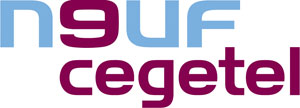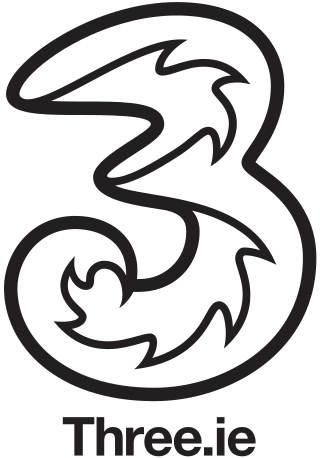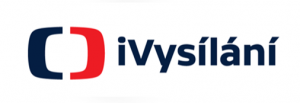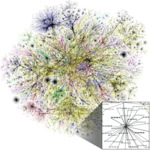The Syrian Ministry of Communications retains governmental authority over the internet in Syria. Prior to the Syrian civil war, telecommunications in Syria were slowly moving towards liberalization, with a number of licenses awarded and services launched in the Internet service provision market. The initiative reflected the government's change in attitude towards liberalization, following its promise to the European Union to liberalize markets by 2010. All other forms of fixed-line communications are provided by the state-owned operator, Syrian Telecom (STE).
Telecommunications in Uruguay includes radio, television, telephones, and the Internet.

Telecommunications in Australia refers to communication in Australia through electronic means, using devices such as telephone, television, radio or computer, and services such as the telephony and broadband networks. Telecommunications have always been important in Australia given the "tyranny of distance" with a dispersed population. Governments have driven telecommunication development and have a key role in its regulation.
4G is the fourth generation of broadband cellular network technology, succeeding 3G and preceding 5G. A 4G system must provide capabilities defined by ITU in IMT Advanced. Potential and current applications include amended mobile web access, IP telephony, gaming services, high-definition mobile TV, video conferencing, and 3D television.
Telkom SA SOC Limited is a South African wireline and wireless telecommunications provider, operating in more than 38 countries across the African continent. Telkom is majority state-owned (55.3%) with the South African government owning 40.5% of Telkom, while another 14.8% is owned by another state-owned company - the Public Investment Corporation (PIC), which is closely linked to the South African government.

Free S.A.S. is a French telecommunications company, subsidiary of Iliad S.A. that provides voice, video, data, and Internet telecommunications to consumers in France. Its head office is in the 8th arrondissement of Paris and it is the second-largest ISP in France.

Neuf Cegetel was a French wireline telecommunications service provider and a mobile virtual network operator (MVNO). It offered various telecommunications services to consumers, enterprises and wholesale customers, ranking second in the country in annual revenues. It was legally established in 2005 following the completion of the merger between Neuf Telecom and Cegetel. As of June 2008, the company became a wholly owned subsidiary of SFR, and the brand disappeared commercially.

The Internet in South Africa, one of the most technologically resourced countries on the African continent, is expanding. The internet country code top-level domain (ccTLD) .za is managed and regulated by the .za Domain Name Authority (.ZADNA) and was granted to South Africa by the Internet Corporation for Assigned Names and Numbers (ICANN) in 1990. Over 60% of Internet traffic generated on the African continent originates from South Africa. As of 2020, 41.5 million people were Internet users.
Internet in Australia first became available on a permanent basis to universities in Australia in May 1989, via AARNet. Pegasus Networks was Australia's first public Internet provider in June 1989. The first commercial dial-up Internet Service Provider (ISP) appeared in capital cities soon after, and by the mid-1990s almost the entire country had a range of choices of dial-up ISPs. Today, Internet access is available through a range of technologies, i.e. hybrid fibre coaxial cable, digital subscriber line (DSL), Integrated Services Digital Network (ISDN) and satellite Internet. In July 2009, the federal government, in partnership with the industrial sector, began rolling out a nationwide fibre-to-the-premises (FTTP) and improved fixed wireless and satellite access through the National Broadband Network. Subsequently, the roll out was downgraded to a Multi-Technology Mix on the promise of it being less expensive and with earlier completion. In October 2020, the federal government announced an upgrade by 2023 of NBN fibre-to-the-node (FTTN) services to FTTP for 2 million households, at a cost of A$3.5 billion.
Internet access is widely available in New Zealand, with 94% of New Zealanders having access to the internet as of January 2021. It first became accessible to university students in the country in 1989. As of June 2018, there are 1,867,000 broadband connections, of which 1,524,000 are residential and 361,000 are business or government.
Internet in Brazil was launched in 1988, becoming commercialy available in May 1995. As of 2023, Brazil ranked fifth in the world with 181.8 million internet users. The country had an internet penetration rate of 86.6% as of January 2024. In March 2024, Brazil ranked 27th in the Ookla Broadband Ranking, with a median fixed broadband speed of 158.57 Mbit/s. Also, as per December 2021, Brazil had 41,4 million fixed broadband accesses, most of them FTTH. However, as per 2020, most Brazilians access the Internet through a mobile connection, with more than 200 million mobile internet access.
The prevalent means of connecting to the Internet in Germany is DSL, introduced by Deutsche Telekom in 1999. Other technologies such as Cable, FTTH and FTTB (fiber), Satellite, UMTS/HSDPA (mobile) and LTE are available as alternatives.

Internet in Moldova is one of the fastest and least expensive in the world. The country ranks 3rd in the world by gigabit coverage with around 90% of the population having the option to subscribe to a gigabit plan. The overall infrastructure is well developed which allows many users to experience good quality services throughout the country. However, despite high speeds and cheap prices, the penetration level is quite low when compared with many EU or CIS countries. In 2018, 49% of Moldovan households had broadband access. In 2015, there were 80 registered Internet Service Provider's (ISP's) in the country, with the majority being local or regional with only a few offering their services throughout the country. Moldtelecom and StarNet are the country's leading providers sharing around 88% of the market. The remaining 12% are shared between other ISPS, like SunCommunications, Arax Communications and others. Almost all ISPs that offer their services across the country have their headquarters located in the capital-city of Chişinău.
In Romania, there are 18.8 million connections to the Internet. Romania's country code is .ro. The .eu domain is also used, as it is shared with other European Union member states. There were over 600 000 domains registered under .ro at the end of 2012.

Hutchison 3G Enterprises S.A.R.L., trading as 3 (Three) and Hutchison 3G, is the owner of several originally UMTS-based mobile phone networks and broadband Internet providers, which operate in Hong Kong, Macau, Austria, Denmark, Indonesia, Ireland, Italy, Sweden, and the United Kingdom.
Hutchison 3G UK Limited, trading as Three UK, is a telecommunications and internet service provider operating in the UK and based in Reading, England. It is an indirect, wholly-owned subsidiary of CK Hutchison Holdings, a limited liability Cayman Islands company registered and listed in Hong Kong, China Three is the fourth-largest mobile network operator in the United Kingdom, with about 10.3 million subscribers as of May 2023.

Three Ireland (Hutchison) Limited, commonly known as 3 Ireland or Three Ireland, is a telecommunications and Internet service provider operating in Ireland as a subsidiary of CK Hutchison Holdings, operating under the global Three brand. The company launched in July 2005 and provides 2G GSM, 3G UMTS, 4G LTE and 5G NR mobile phone services. Three's former holding company, Hutchison Whampoa, acquired O2 Ireland in June 2013, and the company was fully merged into the operations of Three Ireland in March 2015.

iVysílání is a streaming platform of Czech Television. It offers television programmes produced by Czech Television along with films and programmes that Television has its license. Programmes and films can be viewed for free. Viewers can also watch broadcast of Czech Television channels.








